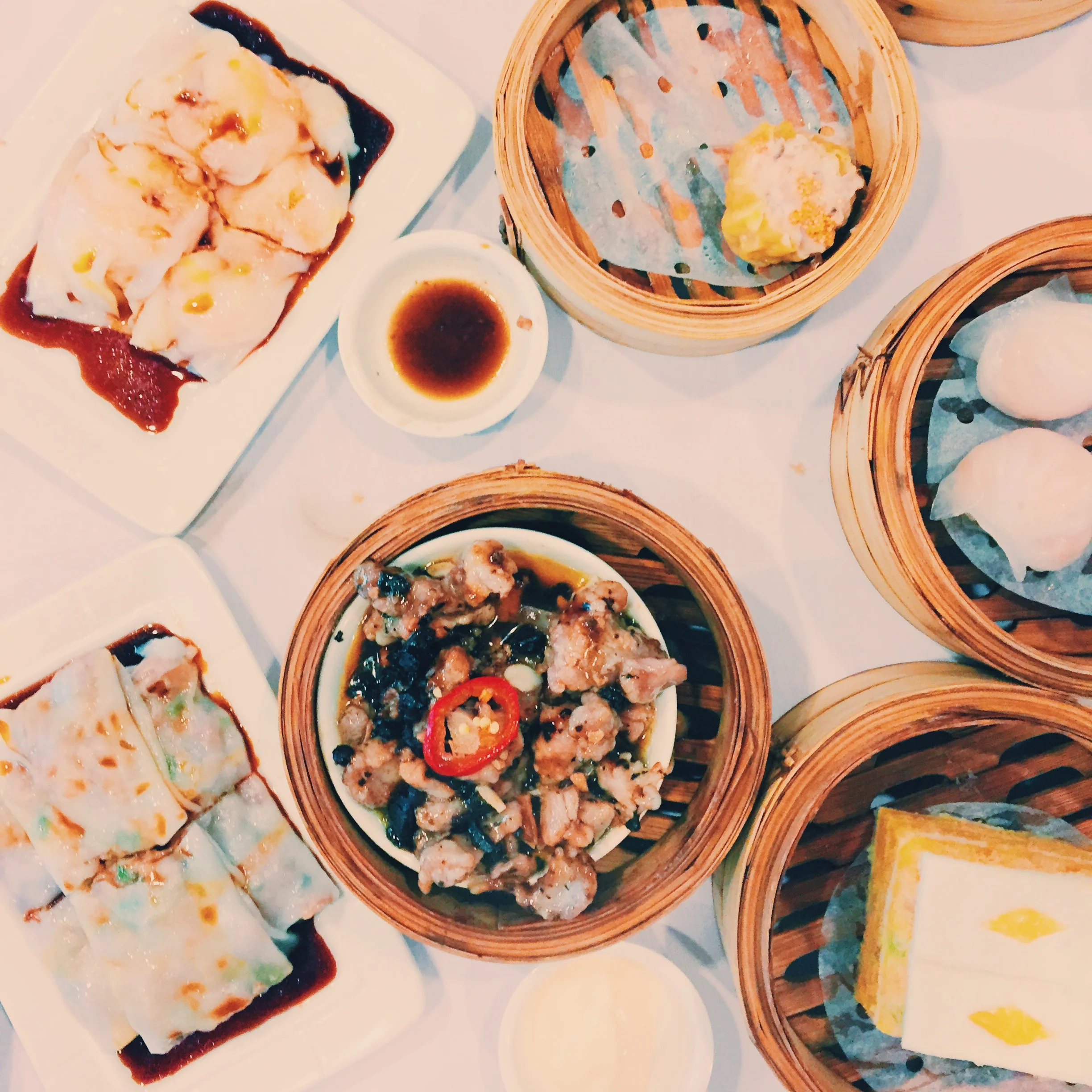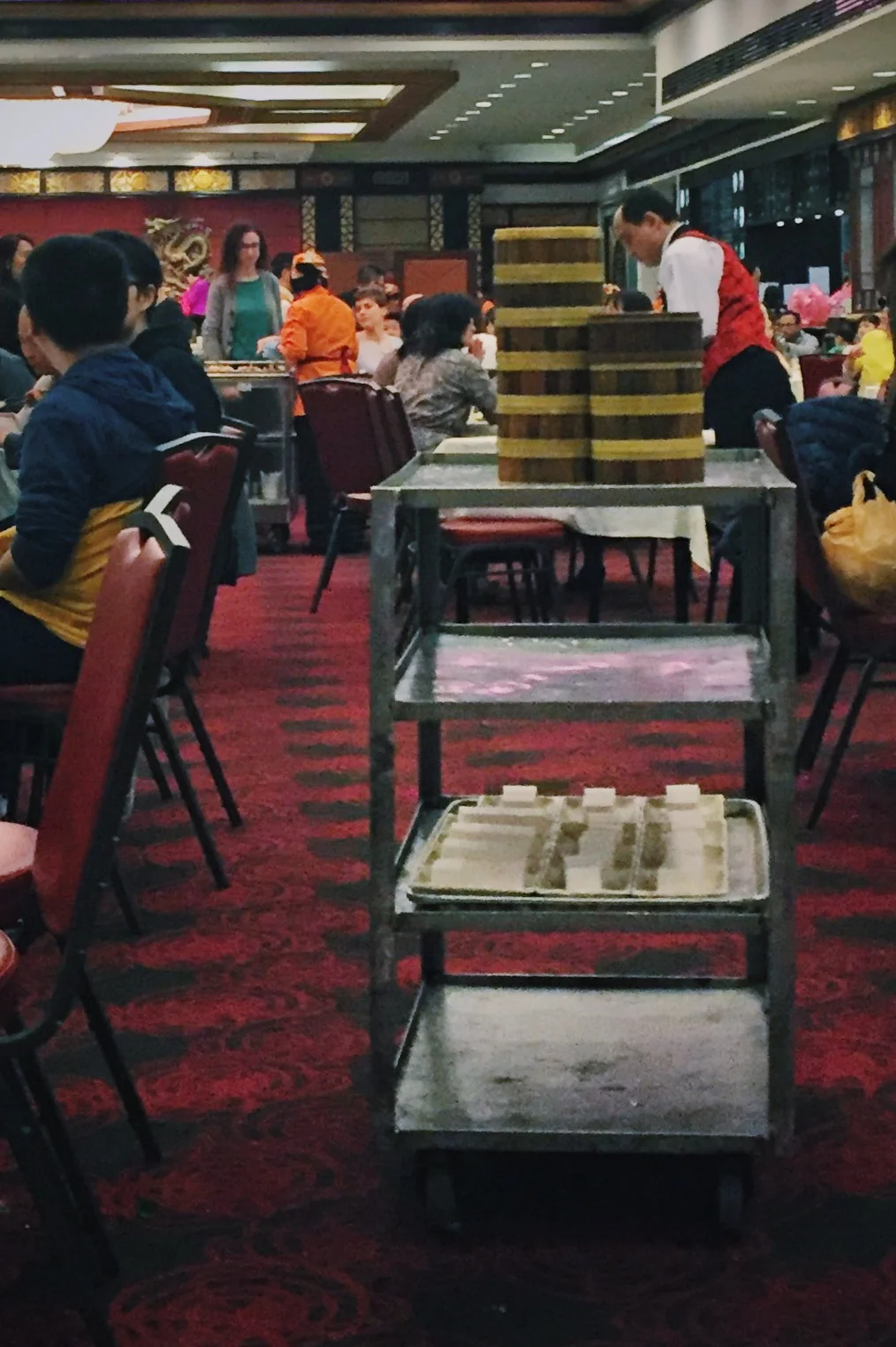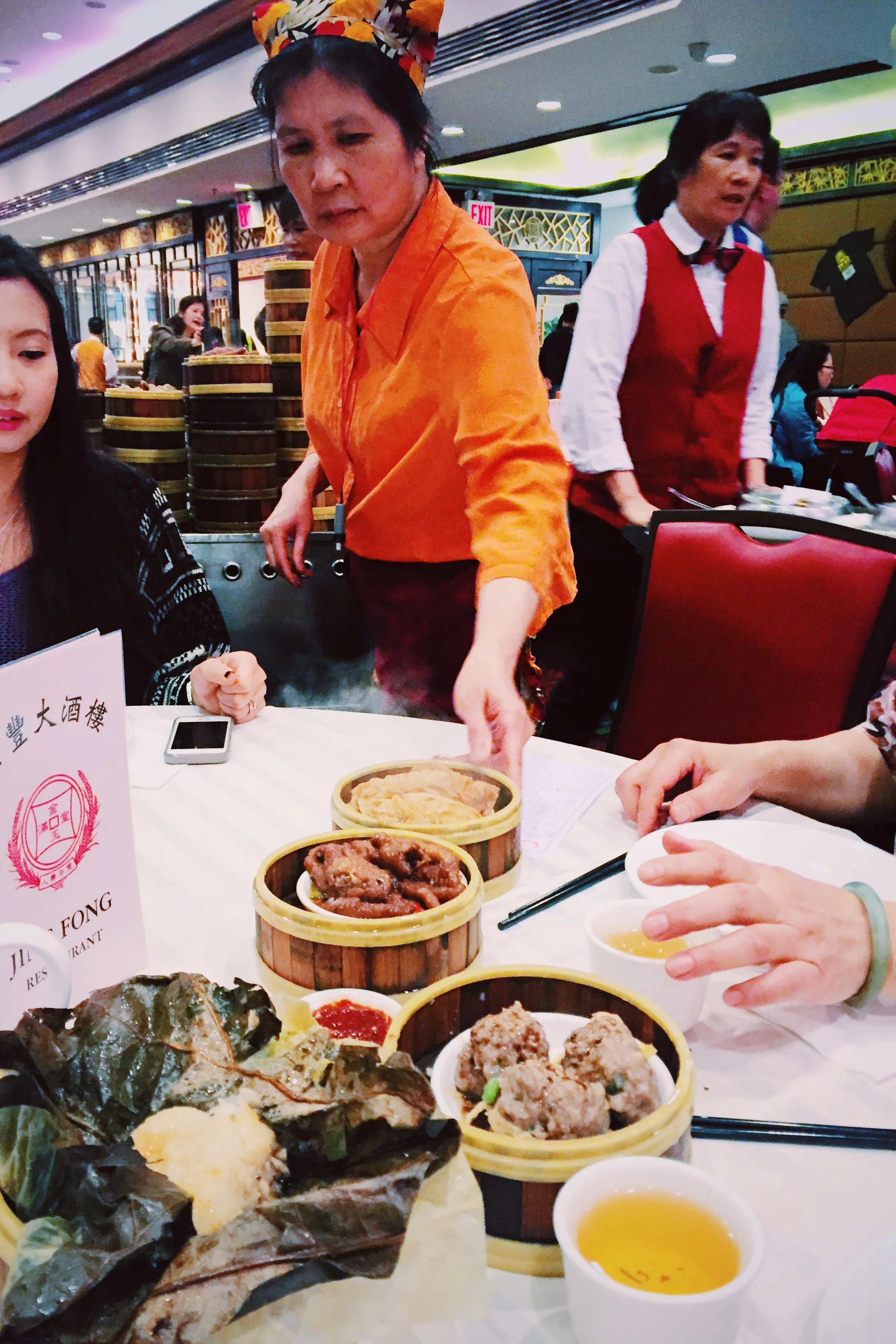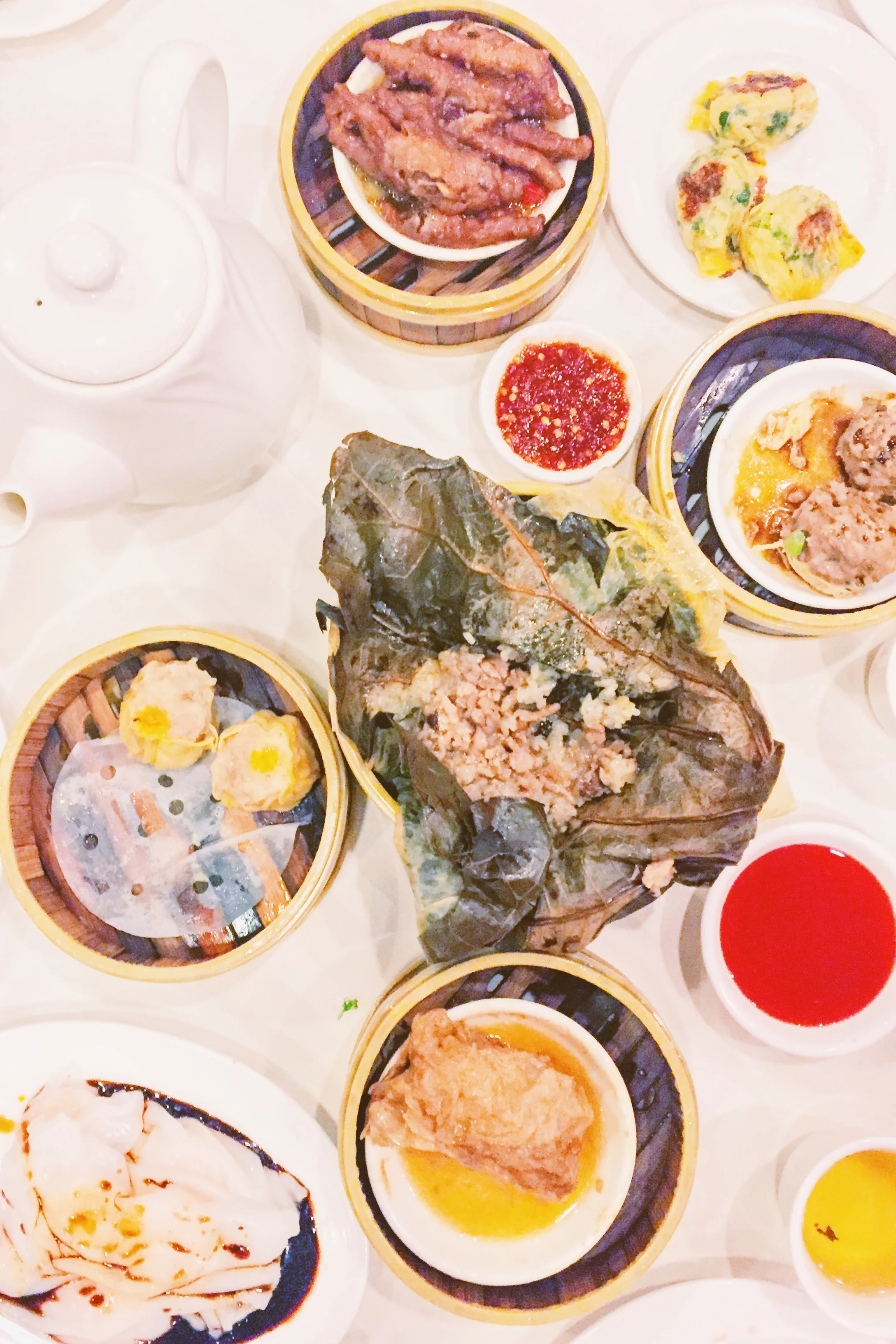How To Dim Sum
"Some things never change" —Vilina
I tell Sis, as she sits down and wipes the plate with her napkin. Grandma took her to dim sum pretty much every week growing up and Grandma was a staunchly proper lady who taught Sis how to dim sum as such.
Grandma played favorites and I didn't fall in that circle (at least I wasn't on her black list, my cousins can attest to that joy), but I did learn a thing or two from watching Sis, a.k.a. Grandma's Golden grandchild.
Different parlors have different guidelines so it's best to look it up beforehand, i.e. if you're allowed to get up and walk around to look for a particular cart, versus waiting for it to cruise near you. Jing Fong in New York permits guests to walk about as they please, and because I didn't know, I commented to Sis how people there were so aggressive, like animals. I'm not judgmental at all.
Generally speaking there are a few basic guidelines that really apply across the board.
1. Choose your tea. The four basic types are bo-lay, gook-fa, wu-long, and lung-jeng. Tea really froms the basis of dim sum, which has its origins in tea parlors on the silk road. The food is actually secondary to the tea—which is why dim sum is actually called yum cha in Cantonese, which literally means "to drink tea." Your choice in tea will dictate the rest of your meal as it helps with digestion and cleanses the platelet. Grandma always requested bo-lay and gook-fa. Yes, you can request more than one type.
2. Wipe your dish with your napkin. It just makes good hygienic sense.
3. The person closest to the tea pours it for the rest of the table, serving him/herself last.
4. Remember dim sum is about sampling, it's really the original tapas, so pretty much everything is split as in, if there are three meatballs, that's enough for six people. This will allow everyone to sample more, and if you guys really love the dish, the cart will circle back! There's really no wrong thing to order, but Phan favorites include fung zao, ngao yuk kau, lo baak goa, cheong fan, wu gok, har gau, and siu mai—just to name a few.
5. If you notice your tea running out, refill yours and anyone else's that's looking a little low.
6. When the tea for the table runs run, dependent on the pot, either flip the cap up if it's attached to the pot or turn the cap upside down—this will alert the waiter for a refill.
7. If you don't see your favorite circulating, ask your waiter—often times they will bring it to the table if it's not "on grounds"—typically taro cakes and lo baak goa are special request because they are time consuming and difficult to make. Do the right thing, always get the lo baak gao or taro cakes.
8. Tip! It may not be traditional wait service, but these push cart ladies rely on tips the same way any other waiter relies on tip.
Some dim sum places won't have push carts and instead will provide a checklist menu for you to choose from—it's less fun than the traditional form, especially for those who recognize dishes by their appearance rather than name (one, Vilina Phan), but that doesn't mean the food is any less good.
Dim sum really should be eaten for brunch. So grab your best buddies and maybe instead of getting avocado toast and poaches eggs this week, try some rice crepes, chicken feet, taro cakes, and egg tarts.



